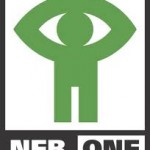While in the process of researching for my study, I stumbled across a website (www.vcircle.com) which acts as a portal for Aboriginal cultural information. The site includes access to important cultural and historical information, Aboriginal beliefs, Native clothing and food and other areas of pertinent information. What I believe is exciting about this site is it allows for Aboriginal youth to connect and learn about their heritage and cultural background. As an example, using the site as a portal I was able to come across another site which catalogued the use of Native imagery for sports teams and sports team mascots. In addition, the site featured film footage of how Hollywood depicted Native Americans and comic book covers. This site can be found here: www.aistm.org/1indexpage.htm
Author Archives: Joseph Turco
SAY Magazine
Say Magazine is a national magazine (can be accessed online as well) which caters to Aboriginal youth. The magazine features stories and issues that are important to Aboriginal youth. As well, each issue includes regional content. The magazine claims that Aboriginal youth are the largest growing demographic in North America with the population projected to climb to over 1.6 million by this year. Some of the themes that the magazine covers include hot topics, entertainment, sports, careers, entrepreneurship, technology, lifestyles, role models/profiles, fashion, and health. While anyone can access the magazine online, the print version is more comprehensive and can be found at Chapters-Indigo. The magazine is another example of the Aboriginal community using ICT to give their community a voice.
The site can be found at: www.saymag.com/canada/
Sunchild E-Learning Community
The Sunchild E-Learning community was created in 2000 by members of the Sunchild First Nation in response to the lack of education within their community and a belief that alternative methods for learning were needed for their youth. To overcome these unique challenges and tackle the lower than average high school completion, an E-Learning program was initiated. The Sunchild E-Learning community provides a range of courses from grade 7 to grade 12 including adult learning courses. Overall the program has been a success with over 80% of the students enrolled graduating and many continuing on to post-secondary institutions. Nickerson (2005) believes that the program’s success can be attributed to the implementation of focusing on the specific learning requirements of the Aboriginal youth including, “sense of time and relationships, and personal and family factors which might interrupt the learning process” (p. 7). In addition the courses do not require the need for high-speed internet taking into consideration the lack of internet access in many of Canada’s Aboriginal communities. Nickerson (2005) also points out that E-Learning allows for Aboriginal children to remain in their communities (unlike residential schools) to participate in cultural activities and strengthening family bonds.
The site can be found at: www.sccyber.net
The Aboriginal Youth Network
The Aboriginal Youth Network is an online community that connects and
encourages Aboriginal Youth across Canada to engage in discussion.
The site provides Native youth an online space to participate in a
dialogue regarding all things relevant to their lives including,
education, opportunities for employment and health. In addition, many
important cultural events are posted and a forum is provided where
Native youth can communicate with one another by posting online
questions, remarks or responses to one another. This website is a
great example of how ICT is being used and engaging Aboriginal youth
in important issues in their community.
The site can be found at: www.ayn.ca
Aboriginal Culture in the Digital World
http://www.kta.on.ca/pdf/AboriginalCultureinaDigitalAge.pdf
The Crossing Boundaries Aboriginal Voice is a project with a goal to
construct understanding about Aboriginal eGovernment and to provide
recommendations for policy-decision making for forthcoming
advancements of Native eGovernment. One of the issues discussed in
forums across the country is how information and communications
technologies (ICT) could be used in Aboriginal communities and their
governments. Many community members have expressed opportunities for
using ICT as a tool for language revitalization and in reinforcing
Aboriginal identity. However, community members have also expressed
concern regarding ICT and the protection of Aboriginal knowledge, how
it will be used and who will have access to it. Some of the questions
outlined in the Aboriginal Culture in the Digital Age paper include:
-
Is ICT the potent enabler for the promotion, renewal and enrichment of
Aboriginal cultures as many claim? (i.e. Does ICT offer new
possibilities for the preservation and teaching of Aboriginal
languages? -
Within the context of increasing numbers of Aboriginal peoples living away
from traditional communities in large urban melting pots, can
technology help safeguard the right of Aboriginal children and young
people to learn their culture and speak their Indigenous languages? -
What types of cultural risks does the new technology present for
Aboriginal peoples? -
Is appropriation and distortion of traditional Aboriginal knowledge one
of them, and if so, what can be done to mitigate the risks of
inappropriate access and use of this knowledge?
In addition, Aboriginal people today are facing a myriad of challenges
concerning culture and identity. This paper also focuses on those
cultural challenges and examines how ICT applications that can assist
in revitalizing culture and community renewal and the impacts it may
have on the community. In addition, the paper discusses how the
younger generation may be able to assist their elders in using ICT
and encourage generational interaction.
The document can be found here:
http://www.kta.on.ca/pdf/AboriginalCultureinaDigitalAge.pdf
Another article written by Nickerson and Kaufman which shares many of the
same themes can be found here:
http://www.ppforum.ca/sites/default/files/aboriginal_culture_in_digital_age.pdf
Suicide Prevention for Aboriginal Youth
The high rate of suicide within the Aboriginal youth population is greatly concerning. The Honouring Life Network website is working towards preventing suicides within the Aboriginal Youth population by providing a network in which Aboriginal youth can share their experiences and gain access to numerous suicide prevention resources. These resources are also available to Aboriginal communities and youth workers. The site receives funding from Health Canada and is an Aboriginal-run entity. The Honouring Life Network website displays a way in which Aboriginal communities are working towards improving Aboriginal youths’ lives by connecting and educating them through the use of technology.
Aboriginal Perspectives at the NFB
The National Film Board of Canada has an “Aboriginal Perspectives” website which serves to provide access to a range of documentaries that reflect important aspects of Aboriginal culture and history. The documentaries included in the site are comprehensive in scope with documentaries falling under seven themes. These themes include arts, cinema and representation, colonialism and racism, history and origin, indigenous knowledge, sovereignty and resistance, and lastly youth.
The documentaries within the youth theme are intended to provide insight into the struggles that Aboriginal youth face. Also, the youth section of the site provides a place for the achievements of Aboriginal youth to be showcased. The youth section of the NFB’s Aboriginal Perspectives website is extremely pertinent to my chosen topic as it displays a clear connection between technology and youth. The site allows for a digital “voice” to be given to the stories of Aboriginal youth.
http://www3.onf.ca/enclasse/doclens/visau/index.php?mode=theme&language=english&theme=30666&submode=teachers
Aboriginal Youth Designing Video Games
While conducting research for my study, I came across a website from the Rochester Institute of Technology which describes a pilot workshop conducted by the Aboriginal Territories in Cyberspace (AbTeC). In this pilot program, Native Youth from the Mohawk Kahnawake Survival School help to design videogames based on traditional stories from their tribe. Based out of Montreal, the goal of AbTeC is to encourage Aboriginal use of online and media based technologies to strengthen Native cultures. In addition, AbTeC is committed to encouraging the participation of Aboriginal Youth in taking part creating video games and virtual reality worlds. To meet these goals, AbTeC has created a video game/virtual reality world workshop (Skins) for Aborginal Youth to teach them how to design, program and create video games and virtual worlds. Members of the academic world, artists and the technologically advanced worked together to help build the curriculum and discuss “the role of new media technologies in North American Indigenous cultural production, outlining curriculum for teaching First Nations youth how to use such technologies, and testing curriculum.” In 2008-2009 at Kahnawake Survival School, AbTeC observed and recorded the following:
- Students were interested in integrating stories from their communities in digital games
- They respected but modified or expanded the stories where appropriate, and
- They were capable of translating those stories through the complex means for developing a video game
For a more comprehensive look at the Skins project follow the link below.
http://www.rit.edu/gccis/gameeducationjournal/skins-designing-games-first-nations-youth
What I Learned in Class Today: Aboriginal Issues in the Classroom
This research project, which was developed in the First Nations Studies program at UBC, examines the discussions regarding Aboriginal issues in the classroom at UBC. The film, What I Learned in Class Today: Aboriginal Issues in the Classroom, which was directed by Karmen Crey (from the Sto:lo nation) and Amy Perreault (who is Metis) covers issues surrounding being Aboriginal including history, art and land claims. In the film, some Native students talk about the experience of feeling pressured to lead discussions for an “aboriginal viewpoint”. At one point in the film, one of the Native students remarks that, “It’s a responsibility sometimes I really relish in and sometimes I really feel like I’m carrying a brick on my back”. The website continues with Crey and Perrault’s findings and features videos of student and instructor interviews and reaction to the project. For example, the information on the website indicates that many Aboriginal UBC students found many Native cultural discussions extremely traumatic. This experience led to student`s coursework being affected and some who were unable to return to class. As a result, the project was created to develop a better understanding of the issues and to “improve the conversations around politically and culturally sensitive issues in a classroom by asking: how does cultural communication happen in a classroom, and how can it be improved?” The site has been important to my study because it provided me with more insight into Aboriginal youths’ experiences in the western educational system. In addition, it is another example of how Native youth are using technologies such as websites and video technology to voice their experiences and concerns.
http://aboriginal.ubc.ca/2010/12/01/training-film-fosters-frank-aboriginal-discussion/
Expressions of Aboriginal Youth
While conducting research for my study I came across a website (http://wn.com/AMESGaliano) which features a two-part mini documentary entitled, Peer Perspectives: Expressions of Aboriginal Youth. Focusing on three emerging First Nations artists, the documentary film explores the youth’s feelings of being Native in a western, industrialized world and focuses on their struggles and how it affects their art. The filmmakers also explore how video technology is assisting Native Youth in telling their stories, rediscovering their culture, and strengthening their voices in the community and the world. Most intriguing were the stories the youth were sharing about what it means to be “Native”. One of the young aspiring filmmakers shared her thoughts on how Native people are represented in the media. The young Aboriginal artist goes on to explain how the negative portrayal of Native people by the media affects Aboriginal people and how they internalize the negative stereotypes and begin to believe how they are perceived by the western culture. The Native youth also talks about the abuse and problems in her family growing up, her uncle, the legacy of the residential school system, and acceptance of who she is. The short documentary is a compelling story and features how Aboriginal youth are using technology to tell their stories.
[youtube]https://www.youtube.com/watch?v=AuhfenCO45U&feature=related[/youtube]


